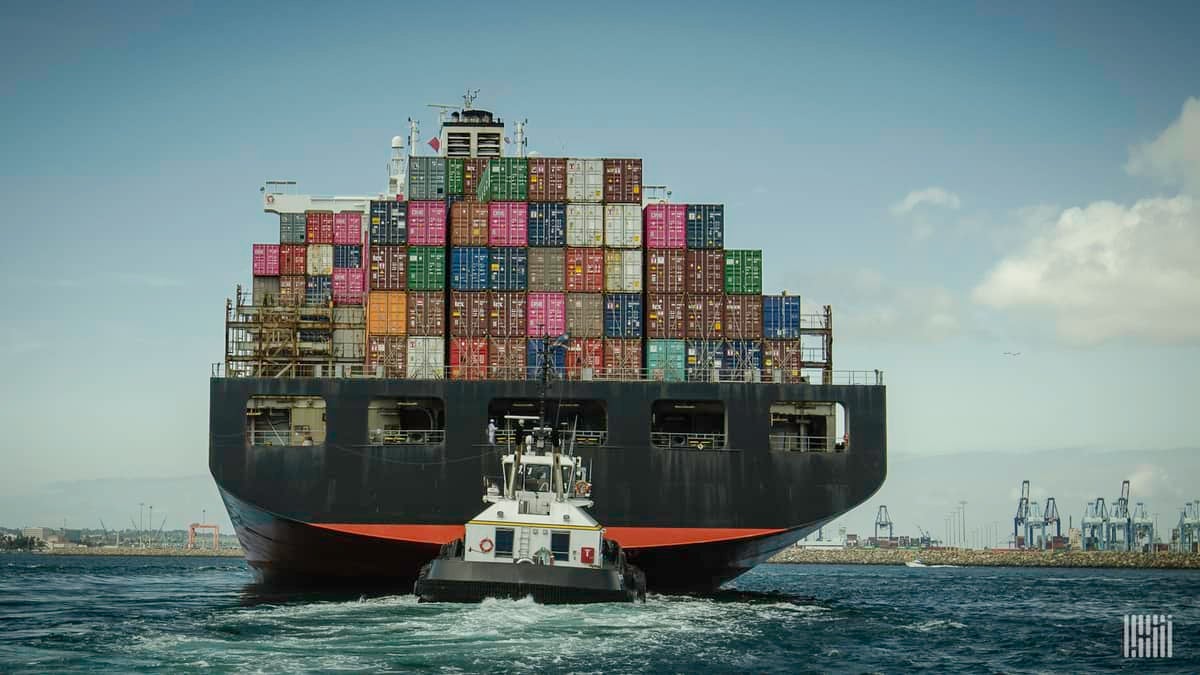The views expressed here are solely those of the author and do not necessarily represent the views of FreightWaves or its affiliates.
Both the United States and the European Union (EU) have been looking into novel ways to stabilize their supply chains amid the COVID-19 pandemic. Since their economies are highly dependent on international trade it makes sense to dig deeper into trade facilitation. The EU government has already put policies in place that stabilize the insurance side of the process. Currently, the U.S. is lagging at the stage of industry lobbying.

(Photo: Jim Allen/FreightWaves)
Transportation facilitates trade. But if it is too expensive for the consignor, then trade does not take place. Likewise, trade does not take place if importers at the manufacturer or wholesaler level feel that their retail customers downstream along the supply chain will not pay them. Many retailers are now building up stocks of fall merchandise. COVID-19 cannot change the weather. Fall and winter will be colder than summer – but how cold will in-person and online shopping be for seasonal clothing, food, etc. for the rest of 2020? There is no way to know for sure. But one thing is certain – a unit not in stock is a unit that cannot earn revenue.
Importers take on the risk of holding excess inventory. They also take on risk when selling items on credit (typically, with one to three-month terms). This, in effect, offers interest-free loans to the buyers. Their customers can earn revenue and pay down their cost of goods sold retroactively. Doing more with other people’s money always looks attractive. Of course, importers can mitigate the risk of holding past-due accounts receivable by also holding trade credit insurance. About $600 billion of annual U.S. sales are protected in this way.

(Photo: Jim Allen/FreightWaves)
Just like transportation facilitates trade – due, in part, to for-hire carriers holding cargo insurance – trade credit insurance takes some of the worry out of the import process. Of course, even those not trained in actuarial science can see that the insurers themselves are facing increased uncertainty due to the COVID-19 pandemic and the global recession it precipitated. The likelihood of defaults and bankruptcies are surely higher than they were a year ago. This would lead to more trade credit insurance claims. Thus, insurers have become leery about issuing more coverage. If there is less insurance offered there will be less liquidity along supply chains and, therefore, less trade.
Atradius, Coface and Euler Hermes, three of the largest trade credit insurers, called for the U.S. government to assist the industry in the face of a higher likelihood of claims. Their jointly commissioned report proposed variants of risk-sharing models (known as reinsurance) between the private insurers and the U.S. government. The intent is to implement one of these models on a temporary basis to ride-out the pandemic.

(Photo: Jim Allen/FreightWaves)
The report, released on July 9, 2020 by Econ One, a consultancy, noted that about 60% of trade credit insurance is issued to small and medium-sized enterprises (SMEs). The report also finds that year-over-year coverage has already been cut back by 14%. Fear of a second wave of COVID-19 could prompt insurers to cut back even further. In any case, less insurance coverage raises importers’ risks, which permeates the supply chain. The alternative is to require downstream partners to pay in advance or upon delivery. Given the economic stakes involved, the National Retail Association stated its support for a government-backed reinsurance program.
On July 29, 2020 the EU’s legislative body – known as the European Commission – adopted a program put forward by the United Kingdom (U.K.) that guarantees present levels of trade credit insurance. Technically, the EU has earmarked 11 billion euros to back any claims made against non-payment of accounts receivable through the rest of 2020. Despite Brexit, the U.K. and the EU are still trading partners willing to share good ideas.

(Photo: Jim Allen/FreightWaves)
Uncertainty in the insurance market is shared by all parties. On the supply side, how liquid are the insurance companies and the banks? Likely more so than just after the 2008 financial crisis. But the current problem is not a credit crunch, it is a government-mandated spending crunch. On the demand side, what are the importers doing to raise their insurability? Hopefully, they are upping their supply chain management skills. Building better relationships with their foreign sources, for-hire carriers and downstream customers are a must. Basically, it is about trying to make things steady and predictable, which insurers prefer, as opposed to erratic and uncertain. Time and money must be invested in good relationship-building.
Another worthy investment is in digitization. Often talked about in the context of transparency and logistical efficiency, getting the paper out of transactions between exporters and importers (including the intermediaries they rely on) speeds trade flows, avoids errors and offers a degree of standardization which is not the norm in paper-based international trade. It would likely also speed up the processing of insurance claims. It is certainly a good signal to send to any insurer in these uncertain times.
Click here to see other commentaries by Darren Prokop on American Shipper and FreightWaves.







